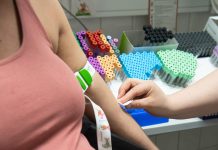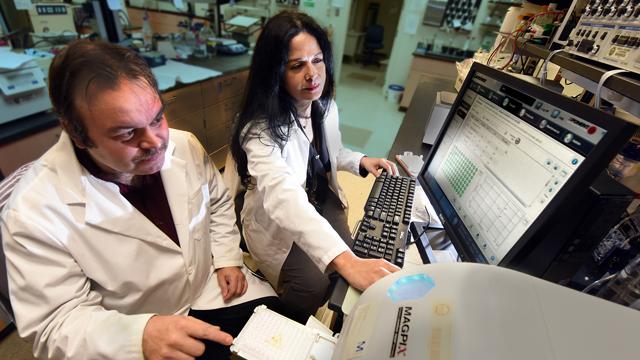JULY 2003 � A common condition that leads to low birthweight babies may predispose the infants to obesity and diabetes later in life by denying cells in the pancreas access to the chemical signals they need to mature, according to researchers at the University of Pennsylvania School of Medicine. Moreover, the condition, which they have successfully modeled in rodents, may be reversed soon after birth by the administration of hormones that stimulate the maturation of the pancreatic beta cells, which produce insulin. Their findings suggest a way of preventing diabetes in people at-risk for the disease by boosting the creation of beta cells soon after birth.
According to Rebecca A. Simmons, MD, assistant professor in Penn's Department of Pediatrics, "the condition, called intrauterine growth retardation (IUGR), is generally caused by the inability of a developing fetus to receive adequate nutrition and can effect as many as one in 10 newborns." Diminished fetal growth is due to a number of different processes such as high blood pressure and intrauterine infections. Epidemiological studies have also shown that there is a strong link between IUGR and the development of obesity and diabetes in adulthood. The Penn researchers believe the link may be due to the decreased formation of blood vessels in the pancreas.
"Our findings show that the blood vessels themselves � not just a signal carried in the blood � appear to provide a signal for pancreatic islets to mature normally in the fetus," said Doris A. Stoffers, MD, PhD, assistant professor in Penn's Division of Endocrinology, Diabetes, and Metabolism. "The defect in the blood vessels may be involved in the later loss of beta cells within islets, which leads to diabetes."
Stoffers, Simmons and colleagues reported their findings in the March 2003 issue of the journal Diabetes, which they and have expanded upon today at a poster session at the annual meeting of the Endocrine Society being held in Philadelphia. The researchers also found that exendin-4, an analog of a pancreatic hormone, normalizes beta-cells, the cells within the pancreatic islets that produce insulin.
"Soon after birth, there is a normal period in which the endocrine function of the pancreas is still being remodeled through periods of increased cell growth and differentiation, as the newborn's body is putting the finishing touches on the endocrine system," said Stoffers. "It is a critical period that, in our IUGR rodents, can be dramatically rescued by exendin-4, which prevents the progressive reduction of insulin-producing beta-cells."
Continue Reading Below ↓↓↓
In addition to a life-long normalization of sugar tolerance, the researchers observed that the animal models maintained a healthy number of beta-cells as well as a normal body weight. Their studies suggest that exendin-4 stimulates beta cells by influencing PDX, a protein that mediates how the pancreas responds to sugar by triggering the production of insulin. PDX is also thought to have a role in islet regeneration in adults.
Therefore, the researchers believe that exendin-4 and related substances show promise in the treatment of diabetes not only because the restorative effects of exendin-4 on beta-cells, but also because of its potential to regulate PDX and thereby expand the amount of beta-cells overall.
"It seems that there is a window of opportunity to prevent the development of human adult-onset diabetes by treating newborns," said Stoffers and Simmons. "If this research translates into humans, then we can envision a way to prevent the development of adult onset diabetes�� by increasing the amount of beta-cells that children will carry with them into adulthood."
Other contributors to this research include Biva M. Desai and Michael Crutchlow of Penn and Diva D. DeLeon, of Penn and The Children's Hospital Of Philadelphia. The ongoing research of Drs. Stoffers and Simmons is supported by grants made by the National Institutes of Health, the American Diabetes Association, and the Pennsylvania Diabetes Center.
Source: University of Pennsylvania










